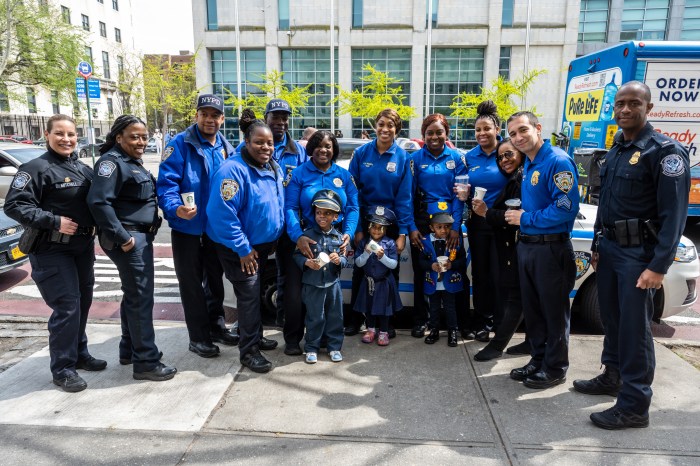
From up close, it doesn’t look like an inhabited building.
Green plywood hides the ground floor; scaffolding shrouds it entirely. It is perched over a wide and vacant lot, also boxed in by plywood so you can only peek through small holes.
But on a walk down Third Avenue in East Harlem last week, City Council Speaker Melissa Mark-Viverito explained that there was still one tenant holding on. The landlord, who also owns the vacant lot, has forced or cajoled all the other residents out. If the last apartment dweller leaves, the landlord would be free to begin lucrative market-rate redevelopment of half the block.
Across the street on 108th, a row of town-houses is boarded up. The street level commercial space is occupied, but the residential space is not. Landlords are keeping the units empty, and could cash-in on the rezoning that will likely begin in the neighborhood as early as this spring.
These are the land-use challenges in East Harlem, one of a number of areas in the city that are still relatively affordable — and threatened by gentrification.
To prepare for it, Mark-Viverito and community representatives have come up with the so-called East Harlem Neighborhood Plan to help guide the rezoning and associated development. Will it work?
Bringing the community into the development cycle
That plan, finalized earlier this year, hopes to avoid the contentious debates that have taken place just before recent rezonings in East New York, Sunnyside and Inwood.
The East New York proposal went through, over community grumbling. The Sunnyside and Inwood ones did not. All were early tests for Mayor Bill de Blasio’s city-wide rezoning initiative, which requires concessions from developers who build in re-zoned areas.
The affected communities in those projects, right or wrong, weren’t happy with the deal they were presented with. Many people felt they were force-fed projects by an unyielding administration without taking into account local realities.
Here, the planning process began soon after de Blasio indicated East Harlem would be one of the areas rezoned. Mark-Viverito, a proponent of the city’s participatory budget movement that aims to get community input on budget decisions, helped set up an outreach program in a similar attempt to elicit community involvement.
It included seven public sessions as well as breakout group meetings and an online survey. Mark-Viverito’s office says more than 1,000 people took part, as well as local groups such as Community Voices Heard, an advocacy organization, and El Museo del Barrio.
The plan they came up with included improvements and investment to parks and schools — better lighting across the neighborhood, a year-round affordable farmers’ market at La Marqueta. But unsurprisingly, in an area where 37 percent of households live on less than $23,350 a year, housing affordability emerged as a top priority.
Critics of the neighborhood plan say it isn’t quite as representative as it’s billed. An online survey listed in the report received only 60 respondents, and some attendees at public sessions were discouraged that the process seemed to move along as though the rezoning was a done deal, not something that could be prevented.
Mark-Viverito calls those critics “anarchists” who just “say no to be contrarian.”
When it comes to development, planning isn’t everything
Those “anarchists” aren’t crazy to think their causes won’t be sufficiently addressed.. Without additional subsidies, the “affordable” housing provided by the developer concessions would hardly be that for locals worried about being “displaced.” The neighborhood plan outlines suggestions to combat that kind of displacement, but the plan is only a suggestion for the decisionmakers here — the City Planning Commission and the City Council.
In other neighborhoods, as here, that boils down to one person: the local council member, given that council tradition is for members to vote with the local member. So the pressure on both sides, from community and administration/developers, funnels down to one.
Mark-Viverito said in no uncertain terms that it should stay that way, as the local council member knows the “nuances” of such projects.
She says she would have a “hard time” getting to a place where she’d oppose the rezoning, but it depends on the details of the final plan.
As a term-limited member who will have to seek new employment in 2017, she could have the freedom to vote yes and ensure that the neighborhood does get something, but also pressure the administration to dig deeper and meet community requests on affordability — which are really less requests than necessities.
While walking down Third Avenue last week, Mark-Viverito pointed to what she says are the stakes for doing nothing. A thin new complex off 110th Street, rising higher than its neighbors — “nothing affordable to that,” she said.

















